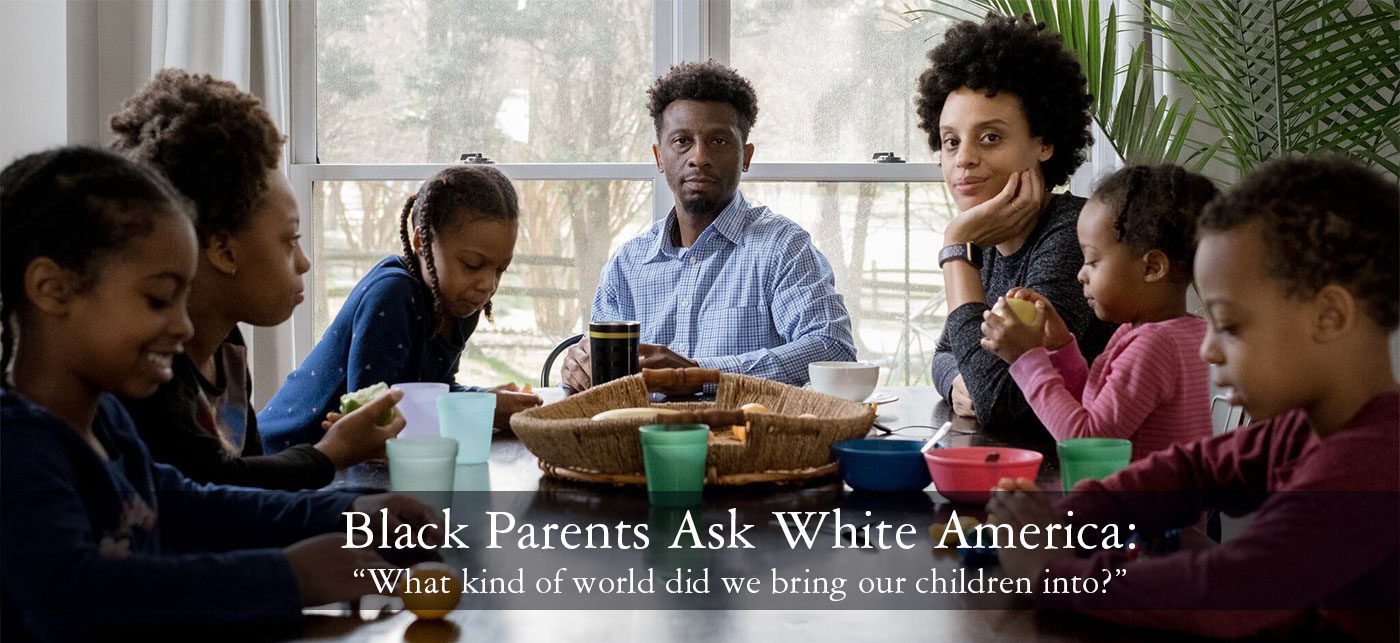by Janel George | Published on January, 2021 for AmericanBarAssociation.org
[Note from Editor: There have been so much misinformation on Critical Race Theory in this country recently. Now, uninformed citizens of Gwinnett County are now organizing around the push to not teach Critical Race Theory in public school. The American Bar Association published an excellent, straight-forward article — “A Lesson on Critical Race Theory” — that is a must-read for all people, all ages.]
In September 2020, President Trump issued an executive order excluding from federal contracts any diversity and inclusion training interpreted as containing “Divisive Concepts,” “Race or Sex Stereotyping,” and “Race or Sex Scapegoating.” Among the content considered “divisive” is Critical Race Theory (CRT). In response, the African American Policy Forum, led by legal scholar Kimberlé Crenshaw, launched the #TruthBeTold campaign to expose the harm that the order poses. Reports indicate that over 300 diversity and inclusion trainings have been canceled as a result of the order. And over 120 civil rights organizations and allies signed a letter condemning the executive order. The NAACP Legal Defense and Educational Fund, Inc. (LDF), the National Urban League (NUL), and the National Fair Housing Alliance filed a federal lawsuit alleging that the executive order violates the guarantees of free speech, equal protection, and due process. So, exactly what is CRT, why is it under attack, and what does it mean for the civil rights lawyer?
CRT is not a diversity and inclusion “training” but a practice of interrogating the role of race and racism in society that emerged in the legal academy and spread to other fields of scholarship. Crenshaw—who coined the term “CRT”—notes that CRT is not a noun, but a verb. It cannot be confined to a static and narrow definition but is considered to be an evolving and malleable practice. It critiques how the social construction of race and institutionalized racism perpetuate a racial caste system that relegates people of color to the bottom tiers. CRT also recognizes that race intersects with other identities, including sexuality, gender identity, and others. CRT recognizes that racism is not a bygone relic of the past. Instead, it acknowledges that the legacy of slavery, segregation, and the imposition of second-class citizenship on Black Americans and other people of color continue to permeate the social fabric of this nation.

Principles of the CRT Practice
While recognizing the evolving and malleable nature of CRT, scholar Khiara Bridges outlines a few key tenets of CRT, including:
- Recognition that race is not biologically real but is socially constructed and socially significant. It recognizes that science (as demonstrated in the Human Genome Project) refutes the idea of biological racial differences. According to scholars Richard Delgado and Jean Stefancic, race is the product of social thought and is not connected to biological reality.
- Acknowledgement that racism is a normal feature of society and is embedded within systems and institutions, like the legal system, that replicate racial inequality. This dismisses the idea that racist incidents are aberrations but instead are manifestations of structural and systemic racism.
- Rejection of popular understandings about racism, such as arguments that confine racism to a few “bad apples.” CRT recognizes that racism is codified in law, embedded in structures, and woven into public policy. CRT rejects claims of meritocracy or “colorblindness.” CRT recognizes that it is the systemic nature of racism that bears primary responsibility for reproducing racial inequality.
- Recognition of the relevance of people’s everyday lives to scholarship. This includes embracing the lived experiences of people of color, including those preserved through storytelling, and rejecting deficit-informed research that excludes the epistemologies of people of color.
CRT does not define racism in the traditional manner as solely the consequence of discrete irrational bad acts perpetrated by individuals but is usually the unintended (but often foreseeable) consequence of choices. It exposes the ways that racism is often cloaked in terminology regarding “mainstream,” “normal,” or “traditional” values or “neutral” policies, principles, or practices. And, as scholar Tara Yosso asserts, CRT can be an approach used to theorize, examine, and challenge the ways which race and racism implicitly and explicitly impact social structures, practices, and discourses. CRT observes that scholarship that ignores race is not demonstrating “neutrality” but adherence to the existing racial hierarchy. For the civil rights lawyer, this can be a particularly powerful approach for examining race in society. Particularly because CRT has recently come under fire, understanding CRT and some of its primary tenets is vital for the civil rights lawyer who seeks to eradicate racial inequality in this country.
The originators of CRT include Derrick Bell, Kimberlé Crenshaw, Cheryl Harris, Richard Delgado, Patricia Williams, Gloria Ladson-Billings, Tara Yosso, among others. CRT transcends a Black/white racial binary and recognizes that racism has impacted the experiences of various people of color, including Latinx, Native Americans, and Asian Americans. As a result, different branches, including LatCrit, TribalCrit, and AsianCRT have emerged from CRT. These different branches seek to examine specific experiences of oppression. CRT challenges white privilege and exposes deficit-informed research that ignores, and often omits, the scholarship of people of color. CRT began in the legal academy in the 1970s and grew in the 1980s and 1990s. It persists as a field of inquiry in the legal field and in other areas of scholarship. Mari Matsudi described CRT as the work of progressive legal scholars seeking to address the role of racism in the law and the work to eliminate it and other configurations of subordination.
CRT grew from Critical Legal Studies (CLS), which argued that the law was not objective or apolitical. CLS was a significant departure from earlier conceptions of the law (and other fields of scholarship) as objective, neutral, principled, and dissociated from social or political considerations. Like proponents of CLS, critical race theorists recognized that the law could be complicit in maintaining an unjust social order. Where critical race theorists departed from CLS was in the recognition of how race and racial inequality were reproduced through the law. Further, CRT scholars did not share the approach of destabilizing social injustice by destabilizing the law. Many CRT scholars had witnessed how the law could be used to help secure and protect civil rights. Therefore, critical race theorists recognized that, while the law could be used to deepen racial inequality, it also held potential as a tool for emancipation and for securing racial equality.
Foundational questions that underlie CRT and the law include: How does the law construct race?; How has the law protected racism and upheld racial hierarchies?; How does the law reproduce racial inequality?; and How can the law be used to dismantle race, racism, and racial inequality?
In the field of education, Daniel Solórzano has identified tenets of CRT that, in addition to the impact of race and racism and the challenge to the dominant ideology of the objectivity of scholarship, include a commitment to social justice; centering the experiential knowledge of people of color; and using multiple approaches from a variety of disciplines to analyze racism within both historical and contemporary contexts, such as women’s studies, sociology, history, law, psychology, film, theater, and other fields.
Some of the most compelling demonstrations of how racism has been replicated through systems is within the education system. Many can recall images of troops escorting nine Black students to integrate Little Rock Central High School. Or Ruby Bridges being escorted into a New Orleans Elementary School by armed guards six years after the U.S. Supreme Court invalidated racially segregated education in Brown v. Board of Education (1954). Those moments are just snapshots of the intersection of racism, the law, and the education system. This article provides just a snapshot of CRT, and the following explanation is a glimpse of the application of CRT in education. But the explanation below seeks to capture how CRT applies to the education system, particularly in addressing how racial inequality persists in the post–civil rights era.
Education and CRT
Segregated schooling is a particularly profound and timely demonstration of the persistence of systemic racism in education. For example, Brown is often couched in terms of American exceptionalism. But Gloria Ladson-Billings and other CRT originators in the field of education recognizethat Brown was the culmination of over a century of legal challenges to segregated schooling and second-class citizenship and far from a natural occurrence or inevitable result of racial progress. The late Harvard Law Professor Derrick Bell, in Brown v. Board of Education and the Interest-Convergence Dilemma, noted that the Fourteenth Amendment alone could not effectively promote racial equality for Black people where such a remedy threatened the superior social status of wealthy white people. Further, Bell noted that Brown was decided the way it was because of what he termed “interest convergence,” which is the recognition that the interests of Black people in achieving racial equality will be accommodated only when it converges with the interests of white people.
Therefore, Brown’slegal invalidation of racial segregation in education held some benefits for white policymakers as well as for Black students. Chief among these, Bell argued, was not the moral imperative of ending legal segregation but restoring the credibility of America’s image abroad. As the nation waged a Cold War, it became increasingly difficult for the country to justify its racial caste system, Bell observed. Further, the Brown ruling was limited in its relief, and the persistence of racial inequality following the civil rights era implicates the law in maintaining racial inequality. For example, the Supreme Court failed to outline a specific remedy to achieve integrated education. As Ladson-Billings notes in Landing on the Wrong Note: The Price We Paid for Brown of Brown II decided in 1955, it can be seen as a combination of flawed compromises that combined a denouncement of legal segregation with a limited and unworkable remedy. It took years of subsequent litigation over the ensuing decades until the Court finally mandated that school districts act to uproot all vestiges of segregation “root and branch.”
A particular limitation of legal efforts to address racial inequality has been the inability of many legal mandates to reach the covert and insidious nature of de factoracism. This has proved that eradicating racial inequality in education is not merely an exercise in ending legal segregation. For example, achieving racial balance, as Bell asserted, did not obviate the need to address other systemic practices that perpetuate racial inequality within diverse schools, such as the loss of Black faculty and administrators, many of whom lost their jobs in the wake of Brown as retribution for aiding school desegregation efforts. Bell observed that changing demographic patterns, white flight, and the reluctance of the courts to urge the necessary degree of social reform rendered further progress in Brown virtually impossible.
The limitations of legal interventions have led to current manifestations of racial inequality in education, including:
- The predominance of curriculum that excludes the history and lived experiences of Americans of color and imposes a dominant white narrative of history;
- Deficit-oriented instruction that characterizes students of color as in need of remediation;
- Narrow assessments, the results of which are used to confirm narratives about the ineducability of children of color;
- School discipline policies that disproportionately impact students of color and compromise their educational outcomes (such as dress code policies prohibiting natural Black hairstyles);
- School funding inequities, including the persistent underfunding of property-poor districts, many of which are composed primarily of children of color; and
- The persistence of racially segregated education.
School funding inequities are exemplified in many racially and socioeconomically isolated districts, such as Detroit’s public schools. In 1940, shortly before Verda Bradley arrived in Detroit, Black Americans comprised 9.2 percent of the city’s population. Over 30 years later, when her children went to school, Black Americans comprised 44.5 percent of the city’s population. The ratio of Black students to white students was 58 to 41 in 1967. Seeking to desegregate the city’s schools, Bradley and other parents who were represented by the National Association for the Advancement of Colored People alleged that Michigan maintained a racially segregated public school system through policies that isolated Black students within the city’s public schools. Due to racially discriminatory housing practices, Black families were excluded from the surrounding suburbs populated by white families that fled the city to avoid integrating the schools. However, in Milliken v. Bradley, the Supreme Court rejected a desegregation plan that encompassed Detroit’s public schools and the surrounding all-white suburbs. In exempting the surrounding suburban districts from the desegregation plan, the Court held that they were not required to be part of the desegregation plan because district lines had not been drawn with “racist intent” and the surrounding suburbs were not responsible for the segregation within the city’s schools. The Court left Detroit to desegregate within itself. In his prescient dissent, Thurgood Marshall observed, “The Detroit-only plan has no hope of achieving actual desegregation. . . . Instead, Negro children will continue to attend all-Negro schools. The very evil that Brown was aimed at will not be cured but will be perpetuated.”
Consequently, in 2000, the ratio of Black students to white students in Detroit’s public schools was 91 to 4. The city’s racially isolated public schools are also profoundly under-resourced. Recent litigation—Gary B. v. Whitmer—brought on behalf of students in Detroit’s public schools illuminates the state of the schools in the decades following Milliken. In their complaint, the plaintiffs describe deteriorating facilities that lack heat and are infested with vermin. They describe the absence of qualified educators that resulted in a middle schooler serving as a substitute teacher. But students like the Gary B. plaintiffs (and students in similarly racially isolated and under-resourced districts) are left with little recourse given that the Supreme Court held in 1973’s San Antonio v. Rodriguez that there is no federal right to education.
Instead, the Gary B. plaintiffs brought a novel claim alleging that they were entitled to a minimum level of education that enabled them to achieve at least a basic level of literacy. The decision of the Court of Appeals in favor of the plaintiffs was ultimately set aside, and the state of Michigan reached a settlement with the plaintiffs. However, from a CRT perspective, the case is instructive about how the law can reproduce racial inequality. By rejecting a desegregation plan that sought to transcend the racial divisions imposed by discriminatory housing practices, the Court essentially foreclosed the possibility of implementing a workable desegregation strategy, and racial and economic inequality persisted unabated. CRT recognizes the inevitability of the segregated and under-resourced schools at issue in the Gary B. litigation, given Milliken’s indifference to the nature of covert discrimination decades earlier.
CRT and a Call to Action for Civil Rights Lawyers
The example of application of CRT to education in the case of Milliken illustrates how CRT recognizes the role of the law in perpetuating racial inequality. Employing a CRT framework necessitates interrogation of systems and structures in which we function. The Milliken example also implicates the impact of discriminatory housing policies and school financing systems in perpetuating racially isolated and under-resourced schools in Detroit and recognizes that education policy does not operate in a vacuum.
Another important consideration is that many of our nation’s systems and structures—including the legal system—were created when people of color were denied full participation in American society. Therefore, as many critical race theorists have noted, CRT calls for a radical reordering of society and a reckoning with the structures and systems that intersect to perpetuate racial inequality.
For civil rights lawyers, this necessitates an examination of the legal system and the ways it reproduces racial injustice. It also necessitates a rethinking of interpersonal interactions, including the role of the civil rights lawyer. It means a centering of the stories and voices of those who are impacted by the laws, systems, and structures that so many civil rights advocates work to improve. It requires the abandonment of a deficit approach that perceives those impacted by unjust laws and policies as deficient, defective, or helpless. Instead, we ought to recognize that these individuals have stories, histories, and knowledge that are worth acknowledging, learning about, and centering. Particularly in devising legal and policy interventions to address racial inequality, CRT calls for considering unintended consequences of proposed remedies, addressing intersecting policies and structures, and acting intentionally to ensure that harm is not further replicated by the legal system. Most of all, CRT demands challenging the status quo of racial inequality that has persisted for far too long in this nation and exploring how the law and lawyers can help to finally upend it.
Like any other approach, CRT can be misunderstood and misapplied. It has been distorted and attacked. And it continues to change and evolve. The hope in CRT is in its recognition that the same policies, structures, and scholarship that can function to disenfranchise and oppress so many also holds the potential to emancipate and empower many. It provides a lens through which the civil rights lawyer can imagine a more just nation.
Read the original article at the American Bar Association – https://www.americanbar.org/groups/crsj/publications/human_rights_magazine_home/civil-rights-reimagining-policing/a-lesson-on-critical-race-theory/.


